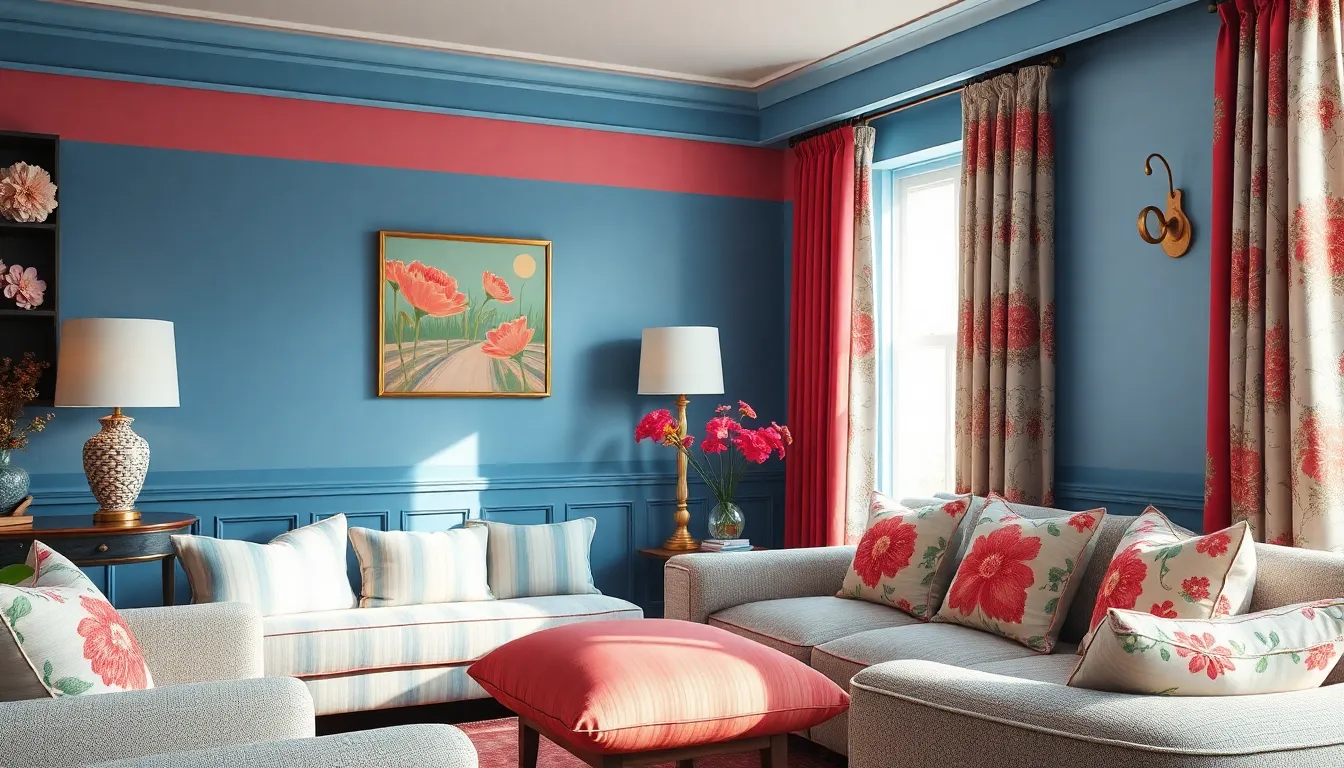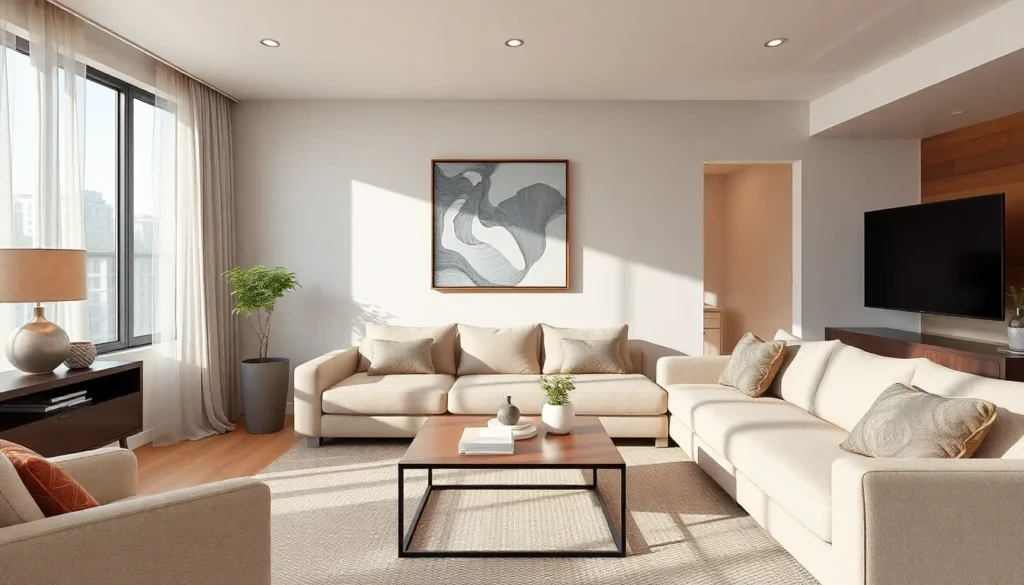Table of Contents
ToggleDecorating a home can be an exciting journey, but it’s easy to fall into common traps that can derail the vision. Many people unknowingly make mistakes that can turn a well-intentioned space into a chaotic blend of mismatched styles and overwhelming clutter. Understanding these pitfalls is essential for creating a harmonious and inviting environment.
From choosing the wrong color palette to neglecting proper lighting, these decorating missteps can diminish the beauty of a room. By recognizing and avoiding these errors, anyone can transform their living space into a true reflection of their personality and style. Let’s explore the key decorating mistakes to steer clear of and ensure a beautifully curated home.
Common Decorating Mistakes To Avoid
Many individuals encounter common decorating mistakes that hinder their ability to create a well-styled living space. Awareness and correction of these missteps promote a more functional and aesthetic environment.
Overlooking Functionality
Ignoring functionality limits the usability of a space. Prioritizing aesthetics over practicality leads to ineffective layouts and impractical furniture choices. Consider the purpose of each room before selecting decor. For example, living rooms require comfortable seating for gatherings, while a home office needs organization for productivity. Establishing a balance between style and function ensures spaces serve their intended roles without sacrificing beauty.
Ignoring Scale and Proportion
Neglecting scale and proportion disrupts the visual harmony within a room. Choosing oversized furniture for small spaces or tiny decor for large rooms creates imbalance. Measure areas before purchasing items. For instance, a large sectional sofa can overwhelm a compact living room, while oversized artwork can cause visual clutter. Aim for items that complement the dimensions of the space. Achieving the right scale and proportion transforms a room from chaotic to cohesive.
Color Palette Pitfalls

Selecting the right color palette significantly impacts the overall aesthetic of a space. Avoiding common color-related mistakes promotes harmony and enhances the intended atmosphere.
Choosing the Wrong Colors
Choosing colors that clash or do not complement each other creates visual disarray. It’s essential to consider the mood associated with different colors; for example, blue encourages calmness, while red adds energy. Utilizing color swatches can help visualize how hues interact with one another. Sticking to a consistent color scheme, ideally three to five colors, allows for cohesion throughout the space.
Clashing Patterns
Clashing patterns disrupt the flow of a room, making it appear unbalanced. Mixing patterns such as stripes, florals, and geometrics can work, given a strategic approach. One method involves selecting a primary pattern that sets the tone, then incorporating secondary patterns that share a common color palette. Ensuring at least one color ties the patterns together helps maintain visual unity, preventing chaos while adding depth.
Furniture Arrangement Errors
Furniture arrangement plays a crucial role in the overall functionality and appearance of a space. Avoiding common errors can enhance flow and create visual interest.
Neglecting Space Flow
Neglecting space flow often leads to cluttered environments and restricted movement. Arranging furniture in a way that obstructs pathways creates frustration. A clear, unobstructed path facilitates easy navigation through a room. Placing larger pieces against walls maximizes open space, while smaller items can group together to create cozy conversation areas. Aim for at least 18 inches of walkable space between furniture pieces to ensure comfort and accessibility.
Failing to Create Focal Points
Failing to create focal points diminishes a room’s aesthetic impact. Every space should have a central feature that draws the eye, such as a fireplace, artwork, or a statement piece of furniture. Inadequate focal points can result in an uninspired layout where elements compete for attention. Position furniture to direct the eye toward the focal point, enhancing visual interest. Using complementary decor around the focal element reinforces its importance and anchors the room.
Lighting Blunders
Lighting mistakes can dramatically affect the ambiance and functionality of a space. Understanding common pitfalls helps create a well-lit environment that enhances both aesthetics and practicality.
Relying Only on Overhead Lighting
Relying solely on overhead lighting can lead to harsh, uninviting spaces. Overhead fixtures often create uneven lighting, leaving dark corners and shadows. Layering lighting through ambient, task, and accent options balances illumination. Ambient lighting sets the general mood, task lighting focuses on specific activities such as reading or cooking, and accent lighting highlights artwork or architectural features. By incorporating multiple light sources, individuals can achieve a more dynamic, inviting atmosphere.
Underestimating Natural Light
Underestimating the impact of natural light can diminish a room’s appeal. Natural light opens up spaces, creating warmth and visual interest. Positioning mirrors opposite windows reflects sunlight, amplifying brightness and depth. Choosing sheer window treatments maximizes daylight while providing privacy. Additionally, placing furniture strategically to avoid blocking light encourages a brighter environment. Recognizing and optimizing natural light contributes significantly to the overall ambiance of a home.
Accessories and Decor Missteps
Errors in accessorizing can detract from a room’s intended design. Being mindful of choices in decor and accessories helps maintain balance and personal expression.
Overdecorating a Space
Overdecorating creates visual clutter that overwhelms a room’s ambiance. Selecting too many accessories can detract attention from key features and lead to a chaotic feel. Limit accessories to a few carefully chosen items that reflect individual style while allowing negative space to breathe. Aim for a balanced display, using groupings of two to five items for cohesive arrangements. Prioritize quality over quantity, favoring statement pieces that enhance the overall design instead of countless smaller ones that confuse it.
Skipping Personal Touches
Neglecting personal touches can render a space impersonal and bland. Incorporating family photos, travel souvenirs, or handcrafted items adds character and warmth. Personal elements act as conversation starters and imbue the space with unique stories. Prioritize integrating these items meaningfully, ensuring they complement the overall decor. Choose a few standout pieces to display prominently, allowing them to serve as focal points that resonate with personal significance. By including personal touches, spaces transform into genuine reflections of individual identity.
Avoiding common decorating mistakes can significantly enhance the beauty and functionality of any space. By prioritizing a cohesive color palette and thoughtful furniture arrangement, individuals can create an inviting atmosphere that reflects their personal style.
Incorporating the right lighting and carefully selected accessories further elevates the overall aesthetic. Each choice contributes to a harmonious environment that balances both style and practicality.
Ultimately, being mindful of these potential pitfalls empowers homeowners to curate spaces that are not only visually appealing but also comfortable and inviting.





